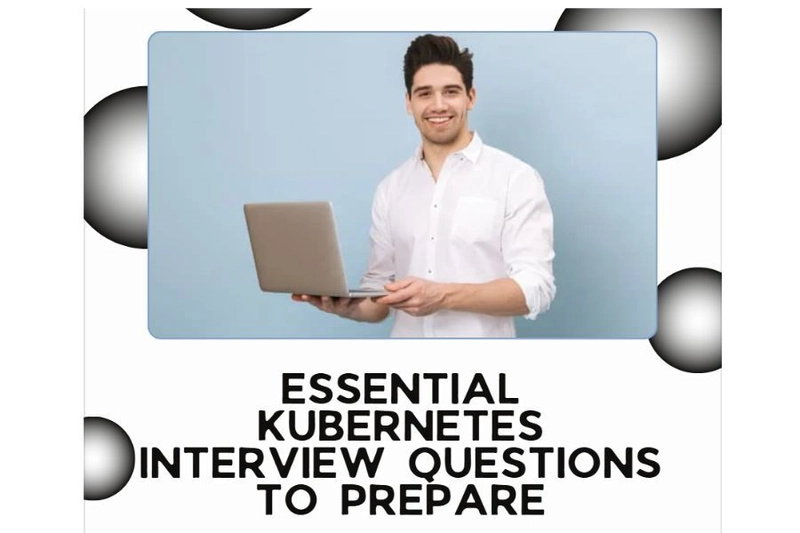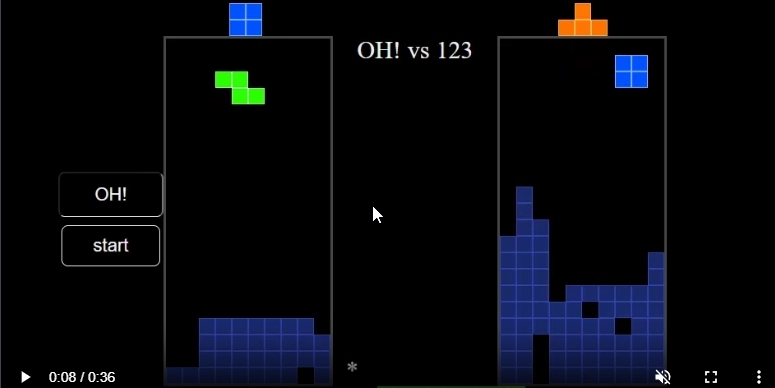Kubernetes Interview Questions You Must Know
Kubernetes is the standard instrument for orchestrating containers, will continue to be a vital expertise in the field of technology. If you're a novice or a seasoned engineer, getting familiar with basic Kubernetes questions for interviews can make you to stand out. We've collected 25 important Kubernetes interview questions, along with some brief details to help you prepare. 1. What exactly is Kubernetes? Kubernetes is a free-of-cost platform created to help automate the process of deploying, scaling and managing containerized apps. 2. What are the primary elements of the Kubernetes architecture? Important components include The Master Node (API Server, Controller Manager, Scheduler etc.) as well as Workers Nodes (Kubelet, Kube Proxy Container Runtime, Kubelet). 3. What exactly is a pod in Kubernetes? A pod is the most compact device that can be deployed in Kubernetes comprising several containers that share with the network as well as storage. 4. What is the meaning of etcd? Etcd is a reliable and highly-available key-value database that is used as Kubernetes backup store for all cluster information. 5. How does the Kubernetes Scheduling function? The scheduler assigns new pods to nodes according to availability of resources as well as other restrictions. 6. What is an ReplicaSet? ReplicaSet guarantees a certain amount of replica pods in operation at all times. It is typically managed via deployments. 7. What is the difference Between ReplicaSet or Deployment? Deployment offers declarative updates for Pods and ReplicaSets. This allows simple rollbacks and scaling. 8. What is an Namespace? Namespaces refer to virtual clusters inside Kubernetes clusters that share cluster resources among users. 9. What exactly is a service in Kubernetes? An abstraction that identifies an logical set of Pods, and a method for accessing them, usually through the same stable IP or DNS name. 10. What are the various types of Services? ClusterIP NodePort LoadBalancer ExternalName 11. What exactly is Ingress in Kubernetes? Ingress manages access from outside to various services, mostly HTTP offering features such as load balancers, SSL termination, and virtual hosting based on names. 12. What makes a ConfigMap different from Secret? ConfigMaps save non-sensitive configuration information ConfigMaps store non-sensitive configuration data, whereas Secrets contain sensitive data such as API keys or passwords encoded using base64. 13. What is DaemonSet? A DaemonSet guarantees that a pod will run across all (or chosen) nodes. This is helpful for monitoring, logs and monitoring, etc. 14. What is what is a StatefulSet? For applications that require storage and identity that is persistent such as databases. 15. What's the function of Kube-proxy? Kube-proxy is responsible for maintaining the rules of network on nodes and allows communication to pods within the cluster. 16. How do you carry out continuous updates with Kubernetes? Rolling updates are possible by deploying deployments, allowing gradual replacement of older pods with fresh ones. 17. What exactly is Helm? Helm is a program to manage packages for Kubernetes that assists in creating the requirements, installing and upgrading complicated Kubernetes applications. 18. What is the best way to monitor a Kubernetes-based cluster? Common tools comprise Prometheus, Grafana, ELK Stack and Kubernetes native Kubernetes metrics-server. 19. What exactly is RBAC what is it in Kubernetes? Role-Based Access Control (RBAC) controls access to resources based on roles. 20. What is an Kubernetes Operator? Operators enhance Kubernetes capabilities by automatizing the administration of complex applications. 21. How does autoscaling work in Kubernetes? With through the Horizontal Pod Autoscaler (HPA), Vertical Pod Autoscaler (VPA) and Cluster Autoscaler. 22. What are taints and tolerances? Taints block pods from being scheduled for particular nodes unless they accept the taints. 23. What is the definition of a sidecar container? The term "sidecar" refers to a support container that is used in conjunction with the main container, providing support features, such as recording or monitoring. 24. How do you solve problems with pods? Commands such as kubectl describe pod, kubectl logs and kubectl get events can be utilized to troubleshoot. 25. What are the best practices in Kubernetes security? Make use of RBAC correctly Enable network policies Use Secrets, not just simple text Make sure to regularly scan images regularly In the process of preparing for interviews, Kubernetes Training can also play a major role in building practical knowledge and boosting confidence for real-world scenarios. Fina

 Kubernetes is the standard instrument for orchestrating containers, will continue to be a vital expertise in the field of technology. If you're a novice or a seasoned engineer, getting familiar with basic Kubernetes questions for interviews can make you to stand out. We've collected 25 important Kubernetes interview questions, along with some brief details to help you prepare.
Kubernetes is the standard instrument for orchestrating containers, will continue to be a vital expertise in the field of technology. If you're a novice or a seasoned engineer, getting familiar with basic Kubernetes questions for interviews can make you to stand out. We've collected 25 important Kubernetes interview questions, along with some brief details to help you prepare.
1. What exactly is Kubernetes?
Kubernetes is a free-of-cost platform created to help automate the process of deploying, scaling and managing containerized apps.
2. What are the primary elements of the Kubernetes architecture?
Important components include The Master Node (API Server, Controller Manager, Scheduler etc.) as well as Workers Nodes (Kubelet, Kube Proxy Container Runtime, Kubelet).
3. What exactly is a pod in Kubernetes?
A pod is the most compact device that can be deployed in Kubernetes comprising several containers that share with the network as well as storage.
4. What is the meaning of etcd?
Etcd is a reliable and highly-available key-value database that is used as Kubernetes backup store for all cluster information.
5. How does the Kubernetes Scheduling function?
The scheduler assigns new pods to nodes according to availability of resources as well as other restrictions.
6. What is an ReplicaSet?
ReplicaSet guarantees a certain amount of replica pods in operation at all times. It is typically managed via deployments.
7. What is the difference Between ReplicaSet or Deployment?
Deployment offers declarative updates for Pods and ReplicaSets. This allows simple rollbacks and scaling.
8. What is an Namespace?
Namespaces refer to virtual clusters inside Kubernetes clusters that share cluster resources among users.
9. What exactly is a service in Kubernetes?
An abstraction that identifies an logical set of Pods, and a method for accessing them, usually through the same stable IP or DNS name.
10. What are the various types of Services?
- ClusterIP
- NodePort
- LoadBalancer
- ExternalName
11. What exactly is Ingress in Kubernetes?
Ingress manages access from outside to various services, mostly HTTP offering features such as load balancers, SSL termination, and virtual hosting based on names.
12. What makes a ConfigMap different from Secret?
ConfigMaps save non-sensitive configuration information ConfigMaps store non-sensitive configuration data, whereas Secrets contain sensitive data such as API keys or passwords encoded using base64.
13. What is DaemonSet?
A DaemonSet guarantees that a pod will run across all (or chosen) nodes. This is helpful for monitoring, logs and monitoring, etc.
14. What is what is a StatefulSet?
For applications that require storage and identity that is persistent such as databases.
15. What's the function of Kube-proxy?
Kube-proxy is responsible for maintaining the rules of network on nodes and allows communication to pods within the cluster.
16. How do you carry out continuous updates with Kubernetes?
Rolling updates are possible by deploying deployments, allowing gradual replacement of older pods with fresh ones.
17. What exactly is Helm?
Helm is a program to manage packages for Kubernetes that assists in creating the requirements, installing and upgrading complicated Kubernetes applications.
18. What is the best way to monitor a Kubernetes-based cluster?
Common tools comprise Prometheus, Grafana, ELK Stack and Kubernetes native Kubernetes metrics-server.
19. What exactly is RBAC what is it in Kubernetes?
Role-Based Access Control (RBAC) controls access to resources based on roles.
20. What is an Kubernetes Operator?
Operators enhance Kubernetes capabilities by automatizing the administration of complex applications.
21. How does autoscaling work in Kubernetes?
With through the Horizontal Pod Autoscaler (HPA), Vertical Pod Autoscaler (VPA) and Cluster Autoscaler.
22. What are taints and tolerances?
Taints block pods from being scheduled for particular nodes unless they accept the taints.
23. What is the definition of a sidecar container?
The term "sidecar" refers to a support container that is used in conjunction with the main container, providing support features, such as recording or monitoring.
24. How do you solve problems with pods?
Commands such as kubectl describe pod, kubectl logs and kubectl get events can be utilized to troubleshoot.
25. What are the best practices in Kubernetes security?
- Make use of RBAC correctly
- Enable network policies
- Use Secrets, not just simple text
- Make sure to regularly scan images regularly
In the process of preparing for interviews, Kubernetes Training can also play a major role in building practical knowledge and boosting confidence for real-world scenarios.
Final Thoughts
Kubernetes continues to grow rapidly It is important to stay up-to-date on the latest trends in interviewing is essential. The following 25 Kubernetes interview questions will not just assist you in securing interviews, but also increase your understanding of Kubernetes design, operations and security. Always keep learning, testing and deploying, because with cloud-native technology it's never too late to learn!










































































































































































![[The AI Show Episode 144]: ChatGPT’s New Memory, Shopify CEO’s Leaked “AI First” Memo, Google Cloud Next Releases, o3 and o4-mini Coming Soon & Llama 4’s Rocky Launch](https://www.marketingaiinstitute.com/hubfs/ep%20144%20cover.png)


















































































































![[DEALS] The All-in-One Microsoft Office Pro 2019 for Windows: Lifetime License + Windows 11 Pro Bundle (89% off) & Other Deals Up To 98% Off](https://www.javacodegeeks.com/wp-content/uploads/2012/12/jcg-logo.jpg)





































![Is this too much for a modular monolith system? [closed]](https://i.sstatic.net/pYL1nsfg.png)






















































































































_Andreas_Prott_Alamy.jpg?width=1280&auto=webp&quality=80&disable=upscale#)
































































































![What features do you get with Gemini Advanced? [April 2025]](https://i0.wp.com/9to5google.com/wp-content/uploads/sites/4/2024/02/gemini-advanced-cover.jpg?resize=1200%2C628&quality=82&strip=all&ssl=1)













![Apple Shares Official Trailer for 'Long Way Home' Starring Ewan McGregor and Charley Boorman [Video]](https://www.iclarified.com/images/news/97069/97069/97069-640.jpg)
![Apple Watch Series 10 Back On Sale for $299! [Lowest Price Ever]](https://www.iclarified.com/images/news/96657/96657/96657-640.jpg)
![EU Postpones Apple App Store Fines Amid Tariff Negotiations [Report]](https://www.iclarified.com/images/news/97068/97068/97068-640.jpg)
![Apple Slips to Fifth in China's Smartphone Market with 9% Decline [Report]](https://www.iclarified.com/images/news/97065/97065/97065-640.jpg)




































































































































